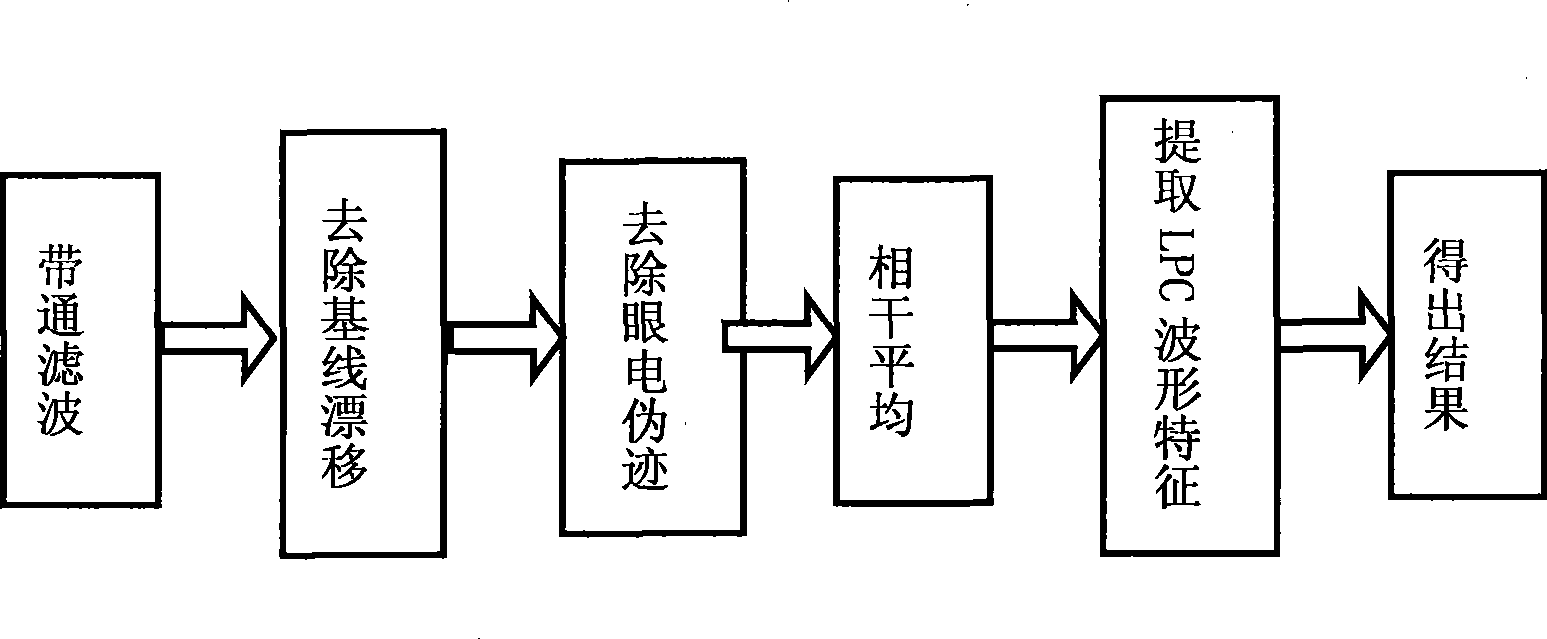Independent desire expression method based on auditory sense cognition neural signal
A technology of neural signals and expression methods, applied in the field of assistive devices for the disabled and human-computer interaction, can solve problems such as discomfort and visual fatigue of users, and achieve the effects of good applicability, increased speed, and less visual fatigue.
- Summary
- Abstract
- Description
- Claims
- Application Information
AI Technical Summary
Problems solved by technology
Method used
Image
Examples
specific Embodiment
[0054] With this method, a voluntary expression system including five orientation options is realized, and the system is composed as follows: figure 1 .
[0055] The selected codebook library contains a total of 5 willingness options. The codebook indexes are: "Up", "Down", "Left", "Right", and "Center". The corresponding codebook content is: "Please go up Move", "Please move down", "Please move to the left", "Please move to the right" and "Please move to the middle". The five single-word speeches of "Up", "Down", "Left", "Right" and "Middle" were called from the speech library, arranged randomly to form the auditory stimulation sequence 2, and the length of each single-word speech was uniformly 250ms. Each sub-codebook index speech will be repeated five times at random, that is, this auditory stimulation sequence 2 contains 25 single-character speech in total. The interval between two adjacent single-word speeches is randomly distributed from 50ms to 250ms. The target inte...
PUM
 Login to View More
Login to View More Abstract
Description
Claims
Application Information
 Login to View More
Login to View More - R&D
- Intellectual Property
- Life Sciences
- Materials
- Tech Scout
- Unparalleled Data Quality
- Higher Quality Content
- 60% Fewer Hallucinations
Browse by: Latest US Patents, China's latest patents, Technical Efficacy Thesaurus, Application Domain, Technology Topic, Popular Technical Reports.
© 2025 PatSnap. All rights reserved.Legal|Privacy policy|Modern Slavery Act Transparency Statement|Sitemap|About US| Contact US: help@patsnap.com



